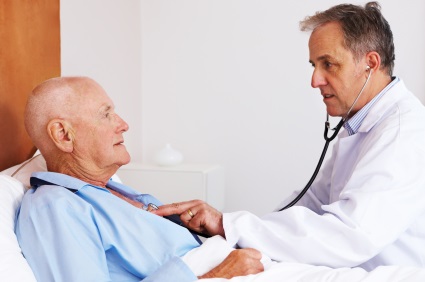Nursing Home Abuse: Catching Perpetrators on Hidden Camera

 Reports of nursing home abuse are on the rise, which recently prompted Oklahoma to become the third state to openly permit residents in long-term care facilities to keep surveillance cameras in their rooms. New Mexico and Texas also explicitly permit this practice, designed to help combat nursing home neglect.
Reports of nursing home abuse are on the rise, which recently prompted Oklahoma to become the third state to openly permit residents in long-term care facilities to keep surveillance cameras in their rooms. New Mexico and Texas also explicitly permit this practice, designed to help combat nursing home neglect.
Some states have administrative guidelines in place regarding electronic monitoring practices, but efforts to put formal laws in place have been slowed due to questions regarding liability and privacy rights.
Regardless of these concerns, family members and even the government have used “granny cams” to capture nursing home abuse. The New York state attorney general’s office has relied on this practice for years, even demonstrating its methods at a national training program for state investigators last year.
The Ohio state attorney, Mike DeWine, announced in June that his office had placed cameras in residents’ rooms in an undetermined number of state facilities, with permission from family members. He noted that cameras captured instances of nursing home neglect, such as an aide repeatedly leaving a debilitated stroke patient’s food by his side, at a Zanesville facility which he has moved to shut down.
Common instances of nursing home neglect include untreated bedsores, inadequate medical care, malnutrition, dehydration, preventable accidents, and inadequate sanitation and hygiene.
Nursing home abuse caught on camera
Families have captured nursing home abuse using strategically placed cameras, radios, webcams, and iPhones. The camera often serves as a final effort for relatives who suspect that abuse may be occurring, but need solid evidence to prove their claims to authorities.
Technology used to capture nursing home abuse is affordable and easily accessible to families. However, the fact that cameras are placed in residents’ rooms ─ often unbeknownst to them ─ also raises questions regarding invasion of privacy of not only the elderly family member, but their roommates and other visitors entering the room.
Supporters of hidden cameras argue that privacy expectations have decreased in our society, with the long-time popularity and success of nanny cams, webcams, and security cameras.
Those unsure about the cameras claim that filming a nanny changing an infant’s diaper is much different than a nursing aide doing the same for an elderly person. Many victims of elder abuse are often incapable of making the decision of whether or not they want a camera in their room at all times, so those on the fence believe decision makers need to put themselves in the shoes of the elderly person.
Many residents have roommates who also need to be taken into consideration. State laws permit these people the right to refuse to be monitored on camera. For example, Maryland has administrative guidelines in place for monitoring at facilities, saying that cameras must be in a fixed position directed at only the specific resident under surveillance.
Notification of monitoring practices
Another ongoing debate is whether signs should be posted in facilities alerting staff members and visitors when monitoring is in process. Many believe nursing home abuse has only been exposed because staff members didn’t know their actions were caught on hidden cameras.
DeWine said abuse may be deterred if workers suspect they might be monitored, but don’t know for sure. He says it isn’t necessary to inform staff of hidden cameras, as it would defeat the purpose.
However, other experts believe the contrary, that notification benefits everyone.
It will be up to individual states to set laws regarding monitoring and notification.


